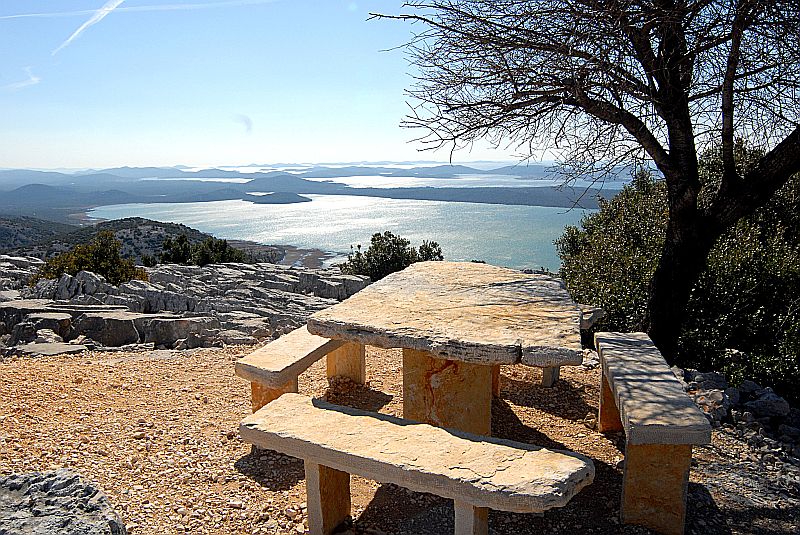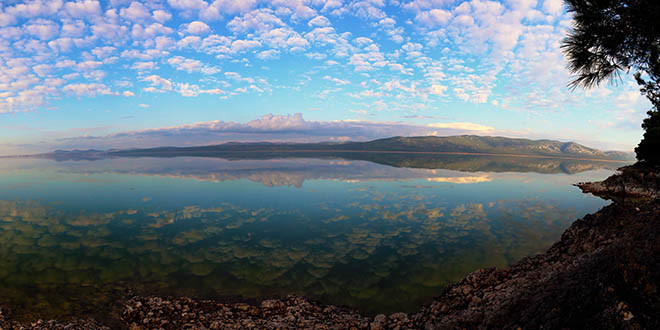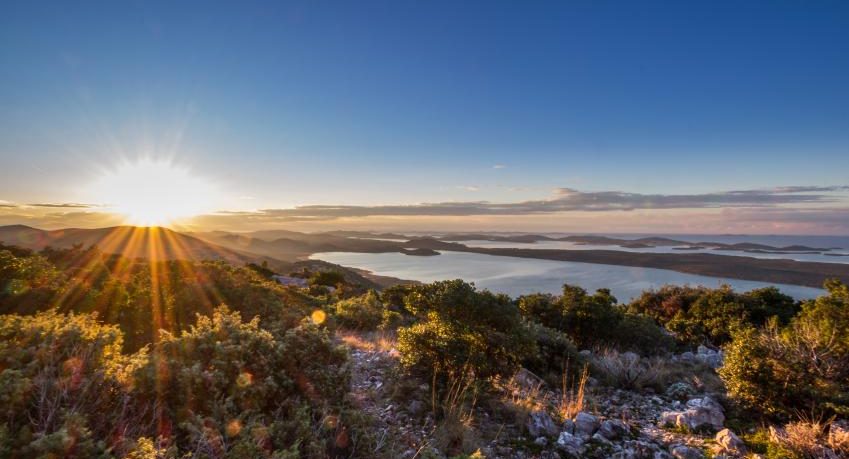National park Kornati islands
The islands of a large-scale sea surface were proclaimed a national park in 1980 due to their exceptional scenic beauty, interesting geomorphology, indented coastline and significantly abundant biocenosis of aquatic ecosystems.
Even though it covers an area of 217 sq km2, with a total of 89 islands, islets and rocks cliffs, the land part of the Kornati National Park makes less than ¼ of the its total area.
The incredible symbiosis of nature and man, who has been living in the “unwelcoming” Kornati for thousands of years, is evident in the modest yet impressive structures like ports, dwellings, dry stone walls, olive gardens, docks, fortifications, churches, salt works and ruins which are valuable adornments of the area.
A relatively large distance from the coast, abundance of fish stock reserves, pirate attacks, rich pastures, restless land areas, barren karst soil, safe shelter in bad weather at sea… give reasons for which the Kornati have simultaneously been a compelling and an extremely dangerous area throughout human history. The Kornati have always been a focus of interest of various cultures and individuals, thus constantly being on the verge of settlement and evacuation, peace and turmoil, wealth and poverty.
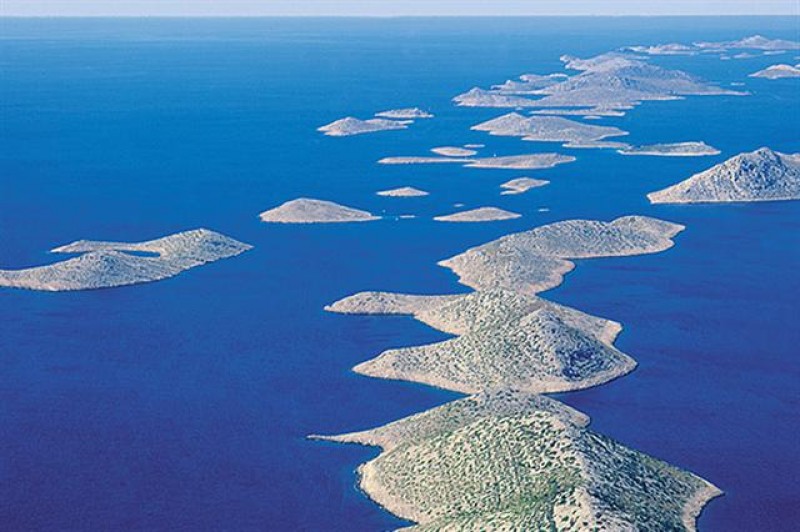
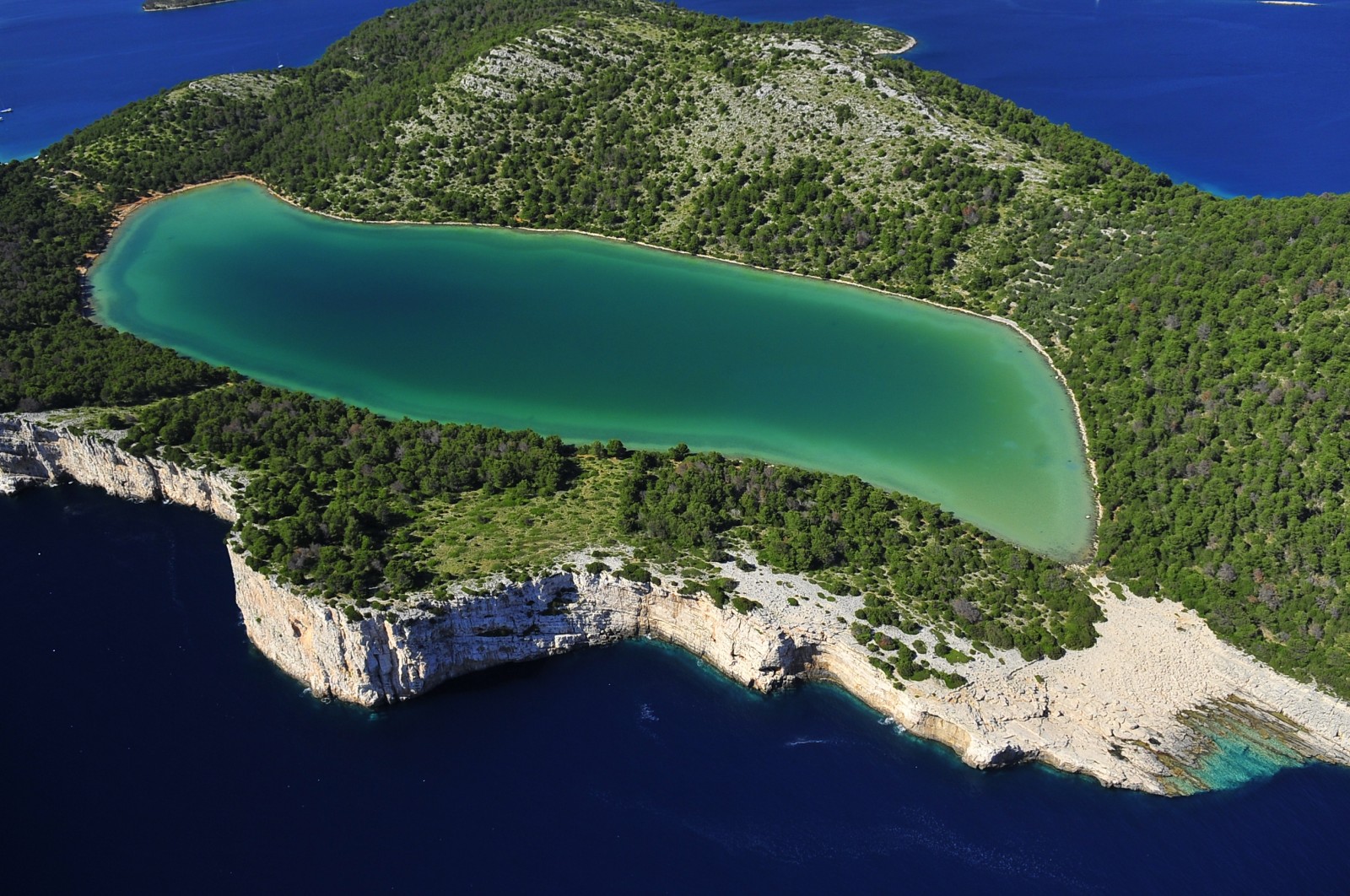
National park Krka waterfals
Due to its seven travertine waterfalls with a total drop of 242 m, the Krka River is a natural and karst phenomenon. The living world of Krka National Park is very rich and diverse, with numerous endemic, rare and threatened species. The diversity of the plant life, with 860 recorded species, attracts both experts and visitors.
The Krka National Park is open to its visitors year round. Within the park, visitors have many interesting things to see and do: Srkadinski Buk, Roški Slap, an educational trail, ethnography presentations, refreshment in restaurants and shopping in souvenir shops. Tours are organized on excursion boats to Visovac Island, Roški Slap, the Krka Monastery and the Trošenj Fortress.
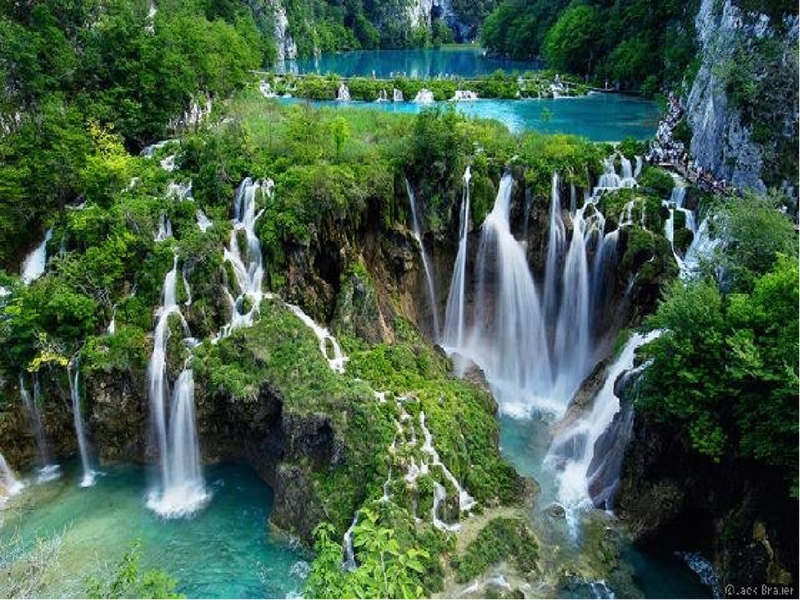
National park Plitvice lakes
The Plitvice Lakes National Park is the largest (294.81 km2) of eight national parks in Croatia. Proclaimed in 1949, it is also the oldest national park in Croatia. The Plitvice Lakes were granted UNESCO World Heritage status in 1979.The wider Park area reveals rich forests and meadow habitats with diverse and numerous plant and animal species. The majority of forest communities are beech and fir forests. As one of the most beautiful forests in Europe, the beech-fir forest Čorkova Uvala takes up a prominent place in the park. The richness of flora is reflected in 1 267 plant species recorded to date, out of which 75 are endemic, and 55 various orchid species.
A long time ago, in 1937, one of the first explorers of this natural phenomenon, the academic Ivo Pavlek, said: ”Water, lakes, waterfalls and forests can be found elsewhere, however, the Plitvice lakes are unique.” You must come and visit them!
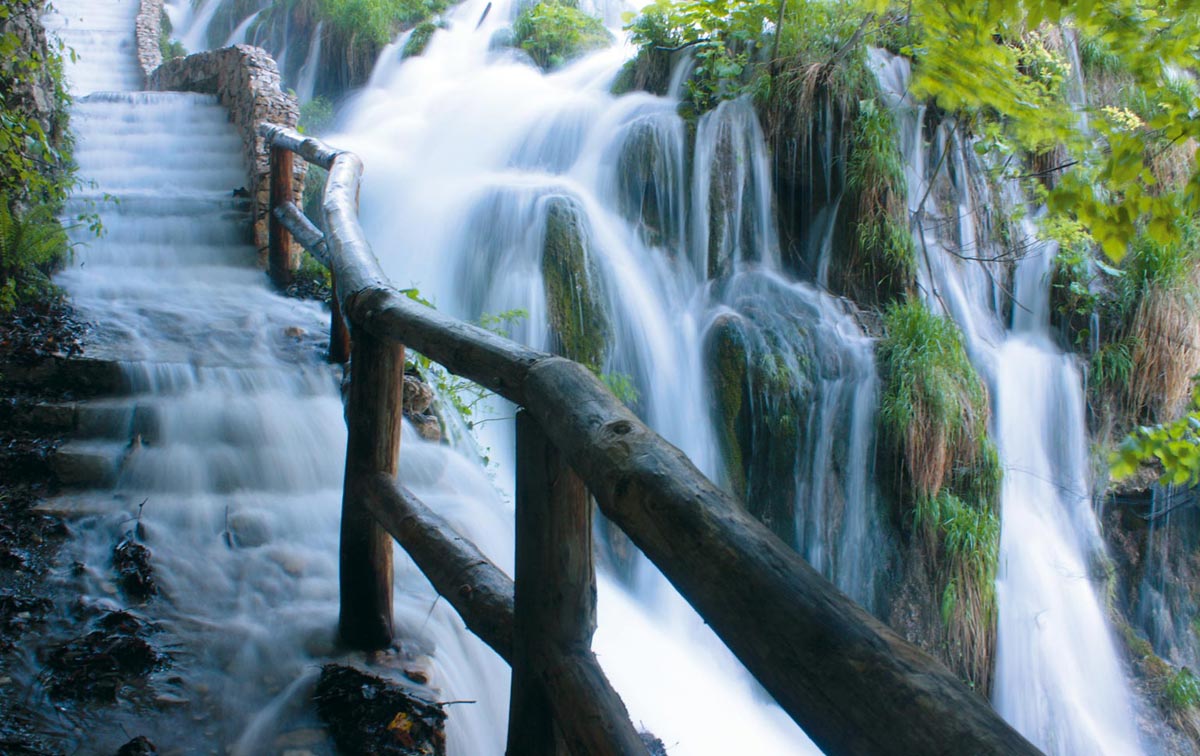
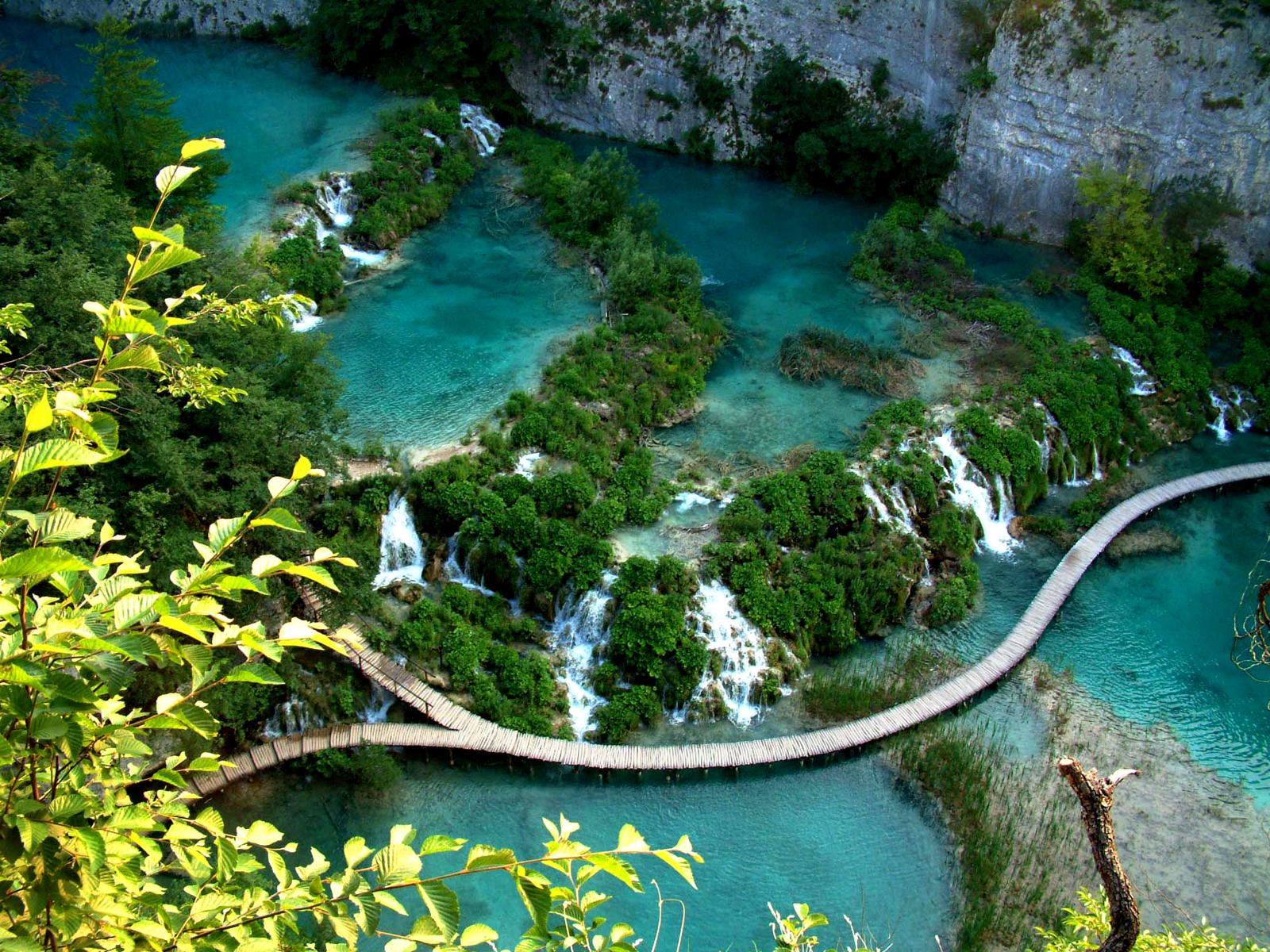
National park Paklenica mountains
Astonishing beauty of the mythical Croatian Mt. Velebit reached its peak in Paklenica National Park. Passing through an area of barely 95 km2, you encounter extremely rich geomorphologic phenomena, animal and plant diversity, appealing scenery and unspoilt nature. Since it was created out of limestone and dolomite, Paklenica is characterised by a variety of karst phenomena such as cracks, groves, rocky areas, pits, faults and caves. Among the greatest and most abundantly adorned are the cave Manita Peć, prepared for tourist visits, and the Vodarica Pit.
The name of Paklenica originates from the name of paklina – a black pine resin which was used to glaze boats, and often as a folk remedy.
Concerning the flora, the most notable is rock vegetation, especially various kinds of bell flowers, while sage and heather prevail on rocky soil. Furthermore, numerous sorts of orchids and lilies grow in the meadows of Paklenica.
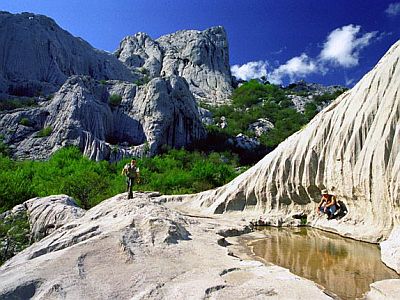
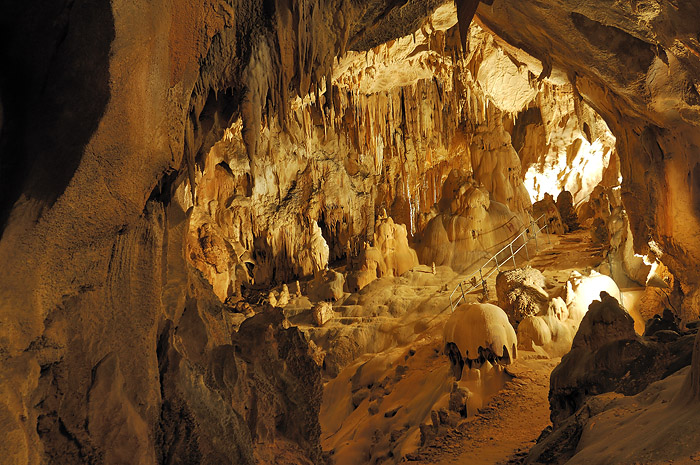
Nature park Vrana lake
Travelling along the Adriatic main road towards the Northern Dalmatia, in between the two historical cities of Zadar and Šibenik, you will come across a natural phenomenon – the two equally beautiful, and yet, completely different azure blue waters. On one side, you will encounter the indented Adriatic Coast, famous for its alluring beauty and clean sea, and on the other side, the largest natural lake in Croatia.
Vrana Lake and its surrounding areas were proclaimed a Nature Park on the 21st of July, 1999 due to its status as one of the rare intact natural habitats of water birds, as well as for its fresh water springs and immense biodiversity. The park boundaries, with a total of 57 sq km2, stretch between the city of Pirovac and Pakoštane, whereas the largest part of 30.02 km2 belongs to the lake area itself. The lake is positioned from north-west to south-east in direction parallel with the sea coast, and, at certain points, with the distance of less than a kilometre from the coast. Unique for its location and characteristics, both in Croatia and in other parts of Europe, it is actually a karst valley filled with brackish water and below-sea-level.
